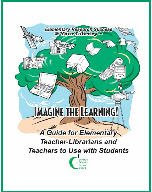There are a number of different strategies that can be used for Create and Share so that students are able to share and demonstrate their knowledge and learning to the best of their abilities. Two such strategies are called R.A.F.T. and Choice Boards. Here are a couple of examples as to how they can be used within the Research Process and this Performance Task.
R.A.F.T. - Role, Audience, Format, Topic
This is a strategy where students assume one of the roles and write an assignment on the suggested topic. Technology can be integrated into all of the formats, (Graphic Organizers, Word Processing, Podcasts, short films, etc…). Students may also create their own R.A.F.T. scenarios.
Buehl (2001)
Choice Boards
Teachers may allow students to create and share their learning in areas in which they are comfortable, but also offer opportunities to extend themselves.
 Adapted from Differentiated Literacy Strategies for Student Growth and Achievement in Grades 7-12, Gregory and Kuzmich.
Adapted from Differentiated Literacy Strategies for Student Growth and Achievement in Grades 7-12, Gregory and Kuzmich. Leave a comment as to which model you might like to do with your students. Please respond to at least one other person's comment as well.

 siteid=65&menuid=6799&pageid=5916
siteid=65&menuid=6799&pageid=5916








